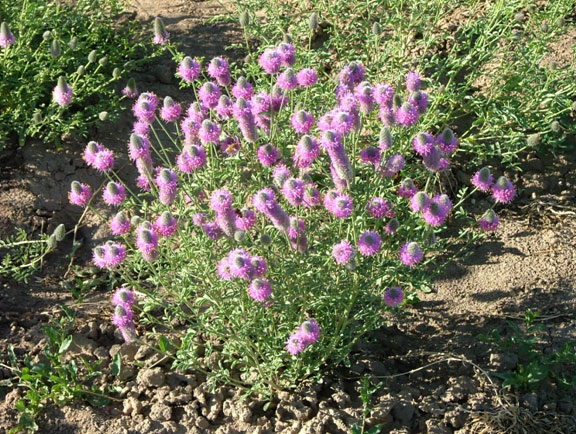Western Prairie Clover in the Landscape

Heidi Kratsch, University of Nevada Cooperative Extension, Reno, NV
Scientfic Name: Dalea ornataCommon Name: Western Prairie Clover, Showy Prairie Clover, Blue Mountain Prairie Clover
Description: This herbaceous perennial legume is native to northwestern Nevada and northern California north to western Idaho, eastern Oregon and southeastern Washington at elevations ranging from 1100 to 3300 feet. Flowers occur in loosely arranged orb-shaped spikes at the terminal ends of the flowering stalks. Flower color is light pink to purple with yellow stamens that protrude from the flower. It blooms in late spring and stays in bloom throughout the summer.
Native Habitat: Found in sagebrush-steppe community in the southern Columbia Plateau and the northern Great Basin.
Cultural Requirement
Soil: Sandy, well-drained, infertile.
Moisture Tolerance: Intolerant of overwatering.
Sun/Shade/Preference: Full sun.
Transplanting: Unknown.
Propagation: Seeds must be scarified using sandpaper or 98% sulfuric acid, planted at a depth of ¼ to ½ inch.
Maintenance (pruning, fertilization, deadheading, division, irrigation, etc): No fertilization required. Needs only a minimum amount of water once established. Takes one year to establish. May need to be cut back to the crown if it becomes overgrown or floppy after 3-4 years. Does not spread aggressively by seed or roots.
Insect, disease, or other problems: Rodents, insect
Landscape Value
Use in the Landscape: Rangeland revegetation, forage, ornamental, attracts native and agricultural bee pollinators.
Foliage: Light green, fine-textured, pinnately compound, 5-7 leaflets
Timing: Apr-Oct
Fruit: Pods containing one or two seeds.
Form: Upright, multi-stemmed.
Texture: Medium.
Ultimate Size: 2 feet high x 2 feet wide.
Rate of Growth: Fast-growing.
Suggested Plant Partners: Ornamental grasses.
Availability: Limited
Cultivars: No ornamental cultivars available.
References:

